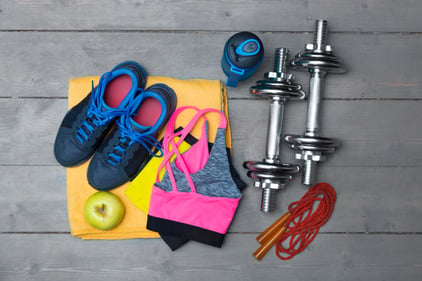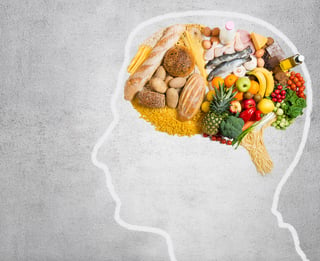.jpg?width=320&name=TRX%20Cher%20(2).jpg) There are a number of misconceptions these days about personal trainers and what it’s like to be one. Don’t all personal trainers have perfect bodies and eat nothing but fruits, vegetables, and protein shakes? Sure, you’ll have a select number of trainers who eat, sleep, and breathe fitness, but the vast majority of us are just normal people. Let’s debunk some of these common myths about personal trainers.
There are a number of misconceptions these days about personal trainers and what it’s like to be one. Don’t all personal trainers have perfect bodies and eat nothing but fruits, vegetables, and protein shakes? Sure, you’ll have a select number of trainers who eat, sleep, and breathe fitness, but the vast majority of us are just normal people. Let’s debunk some of these common myths about personal trainers.
- We eat healthy foods every day of the week. While most trainers enjoy a nutritious, well-balanced diet, most have no problem mixing in a few splurge meals throughout the week. I personally follow extremely strict nutrition Monday morning through Friday afternoon, and then reward myself with fresh pasta or pizza and breadsticks for a Friday dinner. You better believe I’m getting up early on Saturday morning for a long bout of cardio to put those extra carbs to good use!
- We work out two or three times a day. It’s true, trainers should practice what they preach; however, most of us only work out once a day, most days of the week. One big misconception is that trainers and fitness specialists spend most of their workday working out. I actually had a friend ask me, “What do you do all day at work, just work out?” I was flabbergasted with my friend’s question. Whether I’m delivering fitness and nutrition presentations, making workouts for group exercise classes and clients, or creating fun and exciting fitness challenges, most fitness professionals don’t spend all day “just working out.”
- We love all types of exercise. Variety in your workouts is essential, but any trainer would be lying if they said they love all modes of fitness. Most trainers have been working out long enough to recognize what they enjoy, so they generally stick to those methods of exercise to maintain a healthy weight. The key is understanding your client’s needs, and providing them with a variety of options that work for their likes and dislikes. For example, I have two left feet in Zumba class and feel like I might drown in a pool, but I understand that some clients thrive in a choreographed class or swimming freestyle.
- We never get hurt. It’s true that trainers should be demonstrating impeccable technique and injury prevention form while exercising. The truth is that even trainers can overdo it with too much weight or too many repetitions. Furthermore, trainers can sometimes feel like Superman or Superwoman and try things outside of traditional exercises that could potentially hurt them. I learned this the hard way recently while thinking I could ski all day for four days straight in Colorado. The second to last day of my vacation I severely tweaked my back, making the long plane ride home almost unbearable. I credit my consistent core training for my quick recovery; however, I learned my lesson that anyone can overdo it.
- We’ve never had issues with our weight or body. Believe it or not, trainers can be even more self-conscious than their clients. We have problem areas and imperfections. We look in the mirror and wish a certain part of the body was more defined or had less fat. We set such high standards for ourselves; it’s easy to be extra critical of the way we look. Most good trainers can relate to these insecurities and use these feelings to help empathize with clients. Eventually trainers and clients alike have to learn to accept imperfections and embrace the beautiful qualities of their body.
Now that you know a little more about what it’s like to be a personal trainer, you can learn more about personal training at NIFS, and even get a free 30-minute assessment.

 When people think of the word “healthy,” they typically have a vision or an expectation in their heads. We equate “healthy” with having the perfect body (which, by the way, means something different to everyone), making the perfect food choices, getting a certain amount of exercise each week, getting a certain amount of sleep each night, and having very little stress.
When people think of the word “healthy,” they typically have a vision or an expectation in their heads. We equate “healthy” with having the perfect body (which, by the way, means something different to everyone), making the perfect food choices, getting a certain amount of exercise each week, getting a certain amount of sleep each night, and having very little stress.
 These days it seems there is one new health or
These days it seems there is one new health or  There are so many nutrition bars out there that I am sure it can be a challenge to pick one that is the best. So how do you know if the bar you are choosing is the healthiest option for you?
There are so many nutrition bars out there that I am sure it can be a challenge to pick one that is the best. So how do you know if the bar you are choosing is the healthiest option for you? Some people think that snacking can sabotage your healthy eating plan. However, snacking keeps your energy levels up and prevents you from becoming overly hungry, which can lead to poor food choices. Eating every three to four hours can also help regulate your metabolism, which ensures that you burn calories throughout the day. Strive for at least two small snacks per day, but try to limit yourself to 100 to 150 calories or less per snack.
Some people think that snacking can sabotage your healthy eating plan. However, snacking keeps your energy levels up and prevents you from becoming overly hungry, which can lead to poor food choices. Eating every three to four hours can also help regulate your metabolism, which ensures that you burn calories throughout the day. Strive for at least two small snacks per day, but try to limit yourself to 100 to 150 calories or less per snack. Have you been considering plant based nutrition, vegetarian diet? Approximately 3.2% of the American population currently follows this diet, with 0.5% of those following a vegan diet, which includes no animal products at all. This is very small when compared to India, where an estimated 42% of the population does not eat meat.
Have you been considering plant based nutrition, vegetarian diet? Approximately 3.2% of the American population currently follows this diet, with 0.5% of those following a vegan diet, which includes no animal products at all. This is very small when compared to India, where an estimated 42% of the population does not eat meat. One of
One of  Pick up a new sport or try a new fitness class. Get social! Sign up for a
Pick up a new sport or try a new fitness class. Get social! Sign up for a 
 If it’s the most important meal of the day, why do about 31 million people or 10% of the population still
If it’s the most important meal of the day, why do about 31 million people or 10% of the population still  We already know that the foods you eat can affect your weight, heart, blood pressure, and certain cancers, but we also know that food and nutrition can affect your brain health. Whether it’s just improving your memory or helping to prevent Alzheimer’s disease, the foods you choose can help to make your
We already know that the foods you eat can affect your weight, heart, blood pressure, and certain cancers, but we also know that food and nutrition can affect your brain health. Whether it’s just improving your memory or helping to prevent Alzheimer’s disease, the foods you choose can help to make your